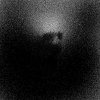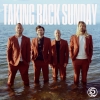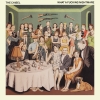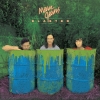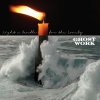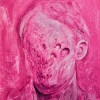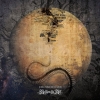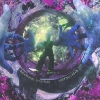Gig Reviews

Vended
Pumpehuset, Copenhagen, DEN - 28/4
Album Reviews
D-A-D & Dizzy Mizz Lizzy
Previous Next
support Ulige Numre
author HES
date 05/06/15
venue Østerbro Stadion, Copenhagen, DEN
Welcome to a beginner's guide to Danish rock history. If you are Danish here’s a chance to catch up on your curriculum - if you are not, this will be your once in a lifetime chance of understanding why Volbeat is not the quintessential Danish rock band, rather merely a small glimpse in a long meteoric trajectory of what is Danish rock. The 5th of June is the day when Danes celebrate a constitution deemed by many constitutional scholars as one of the very best in the constitution game. We usually celebrate the day with very moderate patriotism, as patriotism is a very non-Danish thing. But on this day of the 100th year anniversary of the latest constitution (it was modified a couple of times) two of the greatest and most nostalgia-filled Danish bands decided on a showdown involving 17.000 Danes, beer and well, more beer. The 5th of June is also Father’s Day usually celebrated with a half-assed bouquet of flowers and you guessed it - beer. But instead of the usual gift basket-style lagers, this year the dad’s invaded the makeshift venue of Østerbro Stadium to celebrate themselves. The average age has passed the 40s and already in the bus to the venue, you hear the fight for vocal dominance beginning. Luckily the beers at Østerbro Stadium are plenty and the weather is, well for Danish weather it is absolutely spectacular.
Introduction for non-Danes: Ulige Numre became a sensation overnight because they wrote an anthem to Copenhagen and posted it on YouTube. The Danes not being very patriotic nationally, they make up for by being patriotic locally and the melancholic song about Copenhagen struck a chord that Ulige Numre has pretty much been following up on ever since. The band write songs exclusively in Danish, but if you live here you’ve probably caught one of their ear-catching, retro guitar riffs at a housewarming or grocery shopping even if you aren't aware of it.
So Ulige Numre is a pretty fortunate band. They pretty much accidentally found the formula for making every girl between 13 and 30 fall in love with them, and without being viewed as a rock version of 5 Seconds To Summer or whatever those are called right now. But the nature of their appeal turns out to create a little bit of an issue with the previously mentioned audience. The band hits the stage at 18:00 where the first pint has barely been spilled and even though the band gets most people in front to move from a seated position to a standing one, the audience is mentally not really there. A few wives that have been dragged along, have now in a weird reverse action dragged their men up to the stage, but they make for a poor audience.
It is very obvious that this crowd is not as susceptible to the tight jeans and love lyrics as an Ulige Numre crowd usually is, but Ulige Numre don’t seem to notice that it would probably be a good idea to work a bit harder for their, probably handsome, salary. Instead, we get a lacklustre performance that is enough to gain fans' steady devotion, but not one that really convinces any new listeners to join the fold. And that is really sad. ‘Cause there is no doubt, that Ulige Numre is a band with the potential to write themselves into the Danish music history that we have come here to celebrate tonight. Yet the more times I see this band live, the more they seem robotic and distanced. I had hoped that the release of their latest album “Gran Prix" would’ve added a sense of urgency to their live performances, but I am afraid that those songs actually did even worse with this audience.
Introduction for non-Danes: In the start of the otherwise perm and pink leggings-dominated decade of the 1980’s, a small band called Disneyland After Dark recorded their first demo. The band had to change their name to D-A-D due to copyright infringement, but it is part of the legend that cannot not be told. Most Danes will know of this story too if you ask them, like modern day folklore. There’s no doubt that we like an underdog in Denmark and this probably added fuel to the fire that already was D-A-D. The band plays melodic heavy with touches of glam and Americana. Even Danish folks who don’t usually listen to rock, will be intrigued to go see a D-A-D show and if someone had to re-write the Danish National Anthem, frontman Jesper Binzer would probably be on the shortlist.
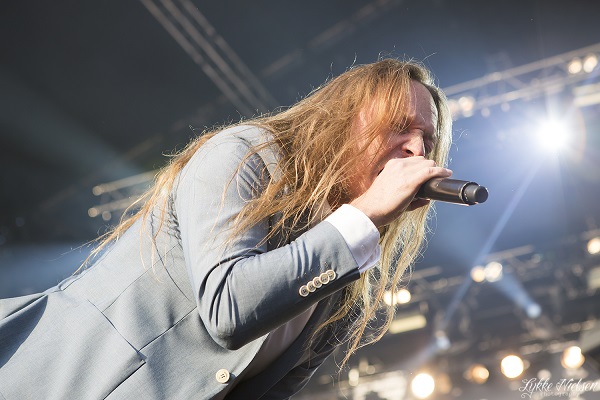 Jesper Binzer of D-A-D
Jesper Binzer of D-A-D
Jesper Binzer, frontman and vocalist of D-A-D, is turning 50 this September and let me just start seriously questioning the legitimacy of his birth certificate. The perfect entertainer greets the audience like old friends, energized and completely ready to go. The crowd gathers and suddenly you feel how overwhelmingly many 17.000 really are, as the crowd loudly joins in on "Everything Glows" and "Helpyourselfish". There's no doubt that the band is throwing punches here, delivering what is definitely the harder part of their catalogue. The trifecta of "I Want What She's Got", the iconic "I Won't Cut My Hair" and lastly "Jihad", is finished off with the drum set being lit on fire to the sound of roaring guitar solos.
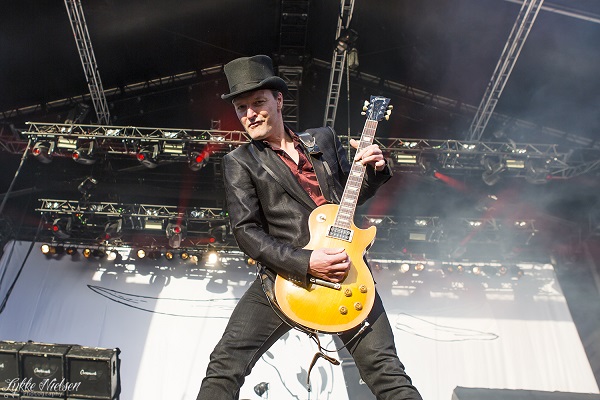
The bassist of D-A-D, Stig Pedersen, is pretty legendary, but (probably for the same reason) had an accidental fracture from falling on stage at a recent show. A replacement was found in the shape of Søren Andersen of Electric Guitars and contrary to my expectations the band manages to make it to the encore before you start thinking of where original bassist Pedersen might be. The answer comes swiftly as Pedersen appears on stage in full cast-matching glam attire, singing the verse of the band's title track "It's After Dark" - perfectly rounding up tonight's result: An overpowering display of dominance.
Introduction for non-Danes: If you were a 90s alternative kid in Denmark chances are that Dizzy Mizz Lizzy's self-titled was to be found in your CD rack rubbing shoulders with Cranberries and Nirvana. The band only released a few albums before disbanding however. Vocalist Tim Christensen went on to use his songwriting skills for the dark side, pretty much producing pop melodies so sugarcoated that turning on the public radio would give you cavities. But for some reason it didn't hurt the recruitment in the Dizzy-cult and even Jesus would be a little jealous of the resurrection the band had in 2010.
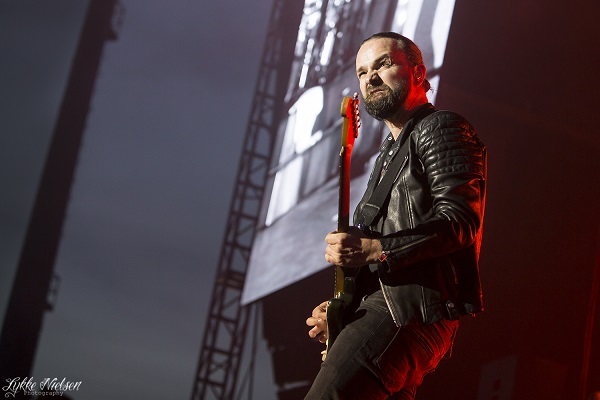
Tim Christensen of Dizzy Mizz Lizzy
After the 2010-reunion, Dizzy Mizz Lizzy changed their relationship status from "reunited" to "reactivated" and the band has lived off the success of their limited material for a few years now, and there is no doubt that this fact affects the liberties the band can take when it comes to spending time on proggy guitar solos. Yet it's very liberating as an audience member to detect a "dad just found his old guitar tucked away in the attic"-kind of joy in Christensen's musical steps. And even though the catalogue of songs is slim, one is overwhelmed by the overweight of hit songs. The band also sounds heavier live than on record, with great emphasis on the slappy basslines of Martin Nielsen.
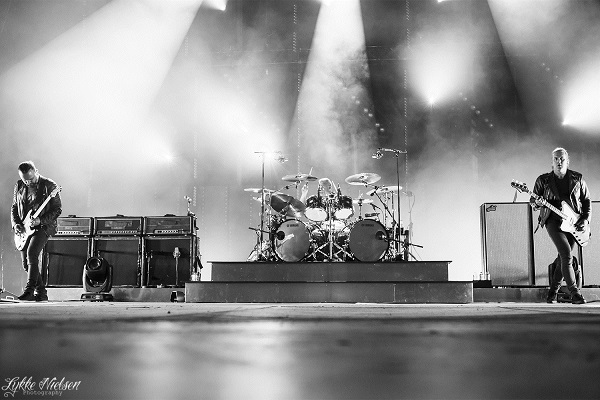
Personally I am still finding it hard to forgive Christensen his ventures in popular music, but one thing is absolutely certain: He is one of the very best songwriters Denmark has to offer, and even though there may not be many of them, Dizzy Mizz Lizzy’s songs are well-crafted love affairs between majors and minors, dark bass tones and soaring guitar riffs, melody and fast-paced chanting. Dizzy Mizz Lizzy may not have lit any drum sets on fire, but there was no real need as the audience of 17.000 move as one to songs like “Glory", “Rotator", “Barbed Wire Baby’s Dream", “11:07 PM" and “Waterline". The inevitable full stop in the shape of “Silverflame" closes off a majestic celebration of Danish rock through the ages.
 Twitter
Twitter Facebook
Facebook





